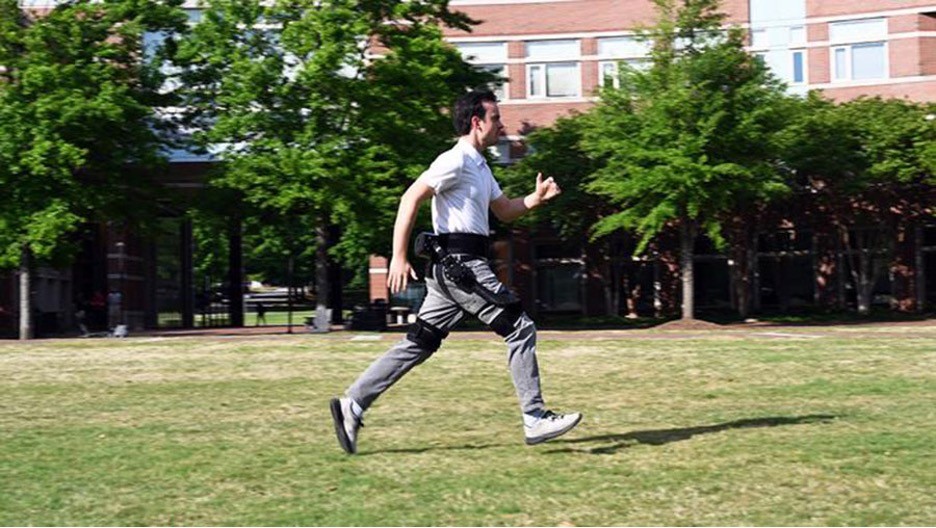02/07/2024
02/07/2024

NEW YORK, July 2: Researchers at North Carolina State University and the University of North Carolina at Chapel Hill have developed a groundbreaking AI-powered exoskeleton, poised to transform the lives of individuals with mobility challenges.
This innovative wearable technology significantly reduces the energy required for movement, making users feel as if they are carrying 26 pounds less. The result is substantial improvements in both athletic performance and everyday activities.
The exoskeleton's revolutionary design leverages sophisticated digital twin simulations, allowing humans and machines to learn and adapt together through millions of iterations. Unlike traditional machine learning focused on simulations and games, the AI algorithm behind this exoskeleton is designed to directly enhance human capabilities.
The researchers employ data-driven and physics-informed reinforcement learning to ensure their wearable robots are not only smart but also intuitive, aligning with their mission to improve human mobility and health. This cutting-edge technology enables end-to-end control by mapping sensor inputs from the robot directly to assistive torque, without intermediate steps.
One of the exoskeleton’s most remarkable features is its ability to provide synergistic assistance across various activities, including walking, running, and stair-climbing. The learned controller adapts to each user’s unique kinematic patterns, seamlessly accommodating transitions between activities without the need for handcrafted controls.
Experimental results are impressive: the exoskeleton achieved the greatest metabolic cost reduction among state-of-the-art portable exoskeletons—24.3% for walking, 13.1% for running, and 15.4% for stair-climbing. This success is due to its versatile and experiment-free control approach, eliminating the need for lengthy human tests and handcrafted rules.
Hao Su, Ph.D., associate professor at North Carolina State University and the University of North Carolina at Chapel Hill, and director of the Biomechatronics and Intelligent Robotics Lab (BIRO), highlighted the potential for cost reduction. "While the exoskeleton price is about $50,000 to $120,000 due to research and development costs and actuators, our approach can significantly reduce the R&D cost by leveraging our efficient learning-in-simulation framework, which allows for rapid design and testing in computer simulations rather than intensive testing on humans and physical robots,” Su explained.
Looking ahead, the researchers aim to make their exoskeletons affordable and accessible. "In about one year, we plan to make our exoskeletons available for sale at a price range of $1,500 to $4,000, depending on specific features and manufacturing scale," Su added, noting plans for innovative hardware design using low-ratio gears and cost-effective, high-torque electric motors.
This AI-powered exoskeleton represents a significant advancement in wearable robotics, offering the potential for rapid development and widespread adoption of assistive robots for both able-bodied and mobility-impaired individuals. It paves the way for a future where mobility is no longer a barrier, removing the hurdles of movement limitations.


